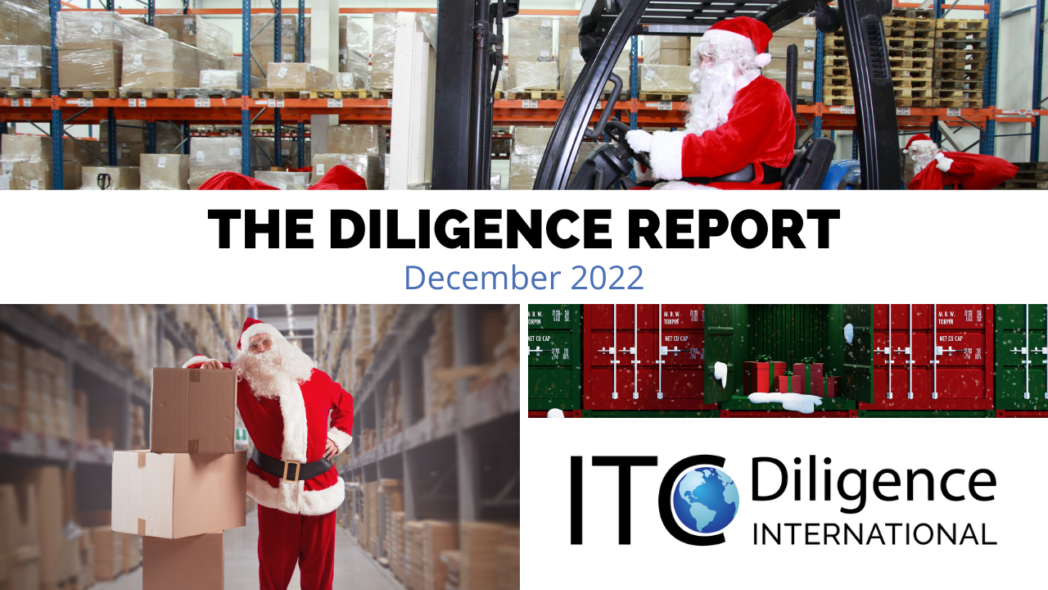The International Trade Industry is no different and is uniquely more prevalent than desired. Interestingly, the terms ‘international trade’ and ‘supply chain’ are often glossed over by society with activities conducted seamlessly without undue attention. This has clearly not been the case for several years, with the culmination of international trade obstacles and supply chain disruptions that closed the chapter on 2021. The better results we were hoping for in 2022 were definitely achieved in many respects.
2022 kicked off with enormous supply chain challenges that began to subside after Chinese New Year. By the end of the first quarter, volumes had returned to normal. This was in large part due to factors such as reduced demand, rerouting of cargo to other ports, rising inflation, and evolving strategies for supply chain management. Costs related to shipping also began to level off to pre-covid conditions while other parts of the industry remained high tied to inflationary factors. Accessibility to shipping capacities and drayage equipment was more obtainable, although warehousing capacity spiked with a vacancy rate of less than 3% and bonded facilities with less than 1%. Lastly, a gradual slowing of the economy nationally and globally contributed to supply chain recovery as well.
Unfortunately, some obstacles continued to be relevant and new obstacles have become more prevalent. The industry continues to navigate 232 and 301 tariffs (China Tariffs), unintended impacts of section 321 enhancements, and PGA increased regulation (EPA, FDA, etc.). New obstacles that were introduced entering 2022 included Forced Labor Actions (WRO/UFLPA), Customs regulatory changes, and Tariff Rate Quotas with aluminum/steel (TRQ).
Foreign Trade Zone (FTZ) solutions significantly grew in popularity in 2022 due to the concept of “Working Smarter not Harder” as well as the continuous growing difficulties to import and export in today’s environment. This is a compliment to the industry’s creativity and ingenuity to maximize opportunities in the international trade and supply chain sectors.
In closing, ITC truly thanks its colleagues, partners, government agencies, and most importantly CUSTOMERS for the collaborative efforts to bring positive solutions and experiences to the forefront of our everyday roles in the industry.
We Collectively Echo Happy Holidays as we Welcome 2023.
Featured FTZ Fact
 The only domestic commodities produced in the US that receive financial benefits are Liquor and Tobacco. This is due to these being the only commodities taxed by the Federal Government!
The only domestic commodities produced in the US that receive financial benefits are Liquor and Tobacco. This is due to these being the only commodities taxed by the Federal Government!
Annual Report Season vs Holiday Card Season
You’re still neck-deep in Thanksgiving leftovers when you realize the deadline for mailing holiday cards to clients and family is right around the corner. It’s a thrilling time each year, especially as you critique your contacts; adding new people, updating addresses, or even removing those who have found themselves on the naughty list (wink)! It can be tedious and time consuming, but once the cards are addressed, stamped, and in the mail, you can relax and think, “at least it’s only once a year.” And the same goes for the “Foreign Trade Zone Annual Report Season”!
The Annual Report Season kicks off January 1st, when FTZ Operators get to review and report the activity of their Foreign Trade Zone during the previous calendar year. As we look at 2022, FTZ’s were and continue to be BUSY! With less than ~1% of total space available, the foreign (and domestic) goods in and out have increased dramatically across the country. Whether your FTZ continues to be a tool to navigate trade policy such as the China tariffs or more recent WROs, the FTZ program continues to prove its necessity in our tumultuous trade environment. The information submitted by each FTZ around the country becomes the story the FTZ Board ultimately shares with The U.S. Congress to help advocate and promote the value of the FTZ Program. The reporting elements can also be tedious and time consuming to pull together. Just remember, its only once per year and your FTZ Consultant can help you navigate the reporting process, so you only need to fulfill the minimum report requirements and submit it on-time!
Speaking of on-time, March 31st is the DEADLINE for both the Annual Report and Annual Reconciliation Letter submission. I don’t advise procrastinating either…90 days goes by too fast!
A couple refreshers about these reports since it’s been a year: the Annual Report discloses the VALUES to the FTZ Board whereas the Annual Reconciliation Report discloses the QUANTITY. The OFIS system, which was re-designed last year for easier usage and navigation, is utilized to submit the Annual Report data from the Operator to their respective Grantee and the Grantee submits to the FTZ Board. The Reconciliation Report is generated by each Operator but ONLY a letter confirming the report is complete and available for review is provided to US Customs. We highly recommend a PROOF of RECEIPT in case Customs asks for the letter and you can’t prove you submitted prior to 3/31. Just remember, you have a friend (i.e. your FTZ Consultant) to help you through this each year and even submit your report into the OFIS system.
Lastly, make sure your FTZ Consultant is on your Holiday card list, or you may be on your own during Annual Report Season (wink)!
Client Spotlight


